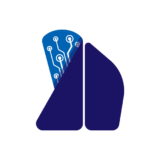Benefits of Choosing Buinsoft’s Oracle Services
Reduced Total Cost of Ownership (TCO)
Improved Performance
Expert Support
Scalability and Flexibility

Effective database management is key to ensuring performance and data reliability. Our services include:
Our 24/7 Oracle DBA services are designed to maintain and support your database environment effectively


We offer seamless Oracle cloud management and migration services that include
Unlock the full potential of your data with our Oracle data warehousing and analytics services. Management and creation of Oracle Data warehouse and Oracle Analytic / Business Intelligence Solution to analyze your data and create reports


We support all aspects of Oracle E-Business Suite (EBS) and other ERP systems: There is need of strong customizations on customer side, and with our expert team, we can support your Oracle Application solutions for integration and customization
Navigating Oracle’s licensing model can be complex. What if we say you can save hundreds of Dollars with right licensing? Oracle licensing is not easy and %98 of purchasing team is not advanced with Oracle licensing

Why Choose Buinsoft for Oracle Solutions?

Unparalleled Expertise:

Value-Based Approach:

End-to-End Support:

Customized Solutions:
Oracle SE and Oracle EE are two licensing models that cater to different business needs, which are illustrated below.
Standard Edition (SE):
Being the low-cost edition, it is highly suitable for small to medium-sized organizations.
Bound to some scalability constraints with only basic database functionalities available
Supports only up to two sockets; hence, it is suitable for small-scale deployments.
Enterprise Edition: It will include all advanced features like partitioning, advanced security features, and data warehousing.
It also supports Oracle Real Application Cluster for high availability and scalability.
It targets large-scale enterprise businesses needing high-level performance due to complex workload management.
Oracle Database is an enterprise grid computing multi-model database management system. It features the relational database model as the standard for storing data as tables. The user can manipulate these tables using Structured Query Language, better known as SQL. Oracle Database is famous for its scalability, security, and strength, where it supports huge applications with different types of data, including relational data, JSON, XML, and many others. It works with the architecture of a database instance and the data itself, while providing partitioning, indexing, and RAC features for its better performance and reliability.
Oracle Cloud Infrastructure is a cloud computing platform that provides high-performance computing, flexible pricing, and hosts several business services. Key benefits include:
High Performance: With OCI, it supports resource-intensive workloads on bare-metal servers and virtual machines.
Scalability: Business can increase or decrease resources with elastic scaling.
Security: Advanced security with data encryption, identity management, and network firewalls.
Cost Efficiency: Competitive pricing models for predictable billing.
Integrated Services: Native integration with Oracle Database, Autonomous Database, and more.
Some of the major activities that feature in the migration of a database to Oracle Cloud include, but are not limited to, the following:
Assessment: This involves studying the current database environment for compatibility with Oracle Cloud.
Planning: This involves formulating a very detailed strategy for migration, including methods of data migration and strategies that will reduce or minimize down time.
Data Movement: Seamless movement of data is enabled by tools such as Oracle Data Pump or Oracle GoldenGate.
Testing: Testing will be carried out to ensure the integrity of data and performance in the cloud.
Go-Live: The final migration in the given downtime window, moving operations onto the cloud.
Optimization: Optimization post-migration to tune performance and introduce cloud-native features.
Oracle E-Business Suite entails an integrated set of business applications that are intended to enable automation of business processes across various functions, including finance, human resources, and supply chain management. Benefits include:
One stop for your data: Bringing data together from various aspects of the company allows for much better visibility and decision-making.
Scalability: Can grow with your business as needs evolve.
Flexibility: Segments are customizable to specific business needs.
Advanced Reporting: Analytics and reporting tools built into the software enable deeper business insights.
The Oracle Data Warehousing and Analytics services include the tools for bulk volume data storage, management, and analytics. These services include:
Oracle Autonomous Data Warehouse (ADW): Self-managing, optimized for analytic workloads
Oracle Exadata: High-performance hardware-software system for data warehousing
ETL Tools: Oracle Data Integrator-ODI provides data integration and transformation.
Oracle Analytics Cloud-OAC: Data visualization, predictive analytics, and business intelligence.
Oracle RAC enables several servers to share a single database for load balancing by providing scalability and high availability:
High Availability: One node crashes, but the others continue serving the workload.
Scalability: Additional nodes are added with ease to increase the power of processing to bear the workload that becomes heavier.
Load Balancing: Database operations are divided among nodes for optimum performance.
Oracle Autonomous Database is a self-driving, self-securing, and self-repairing database service. Key features include:
Automated Patching and Updates: Reduces manual maintenance efforts.
Machine Learning Capabilities: It optimizes performance by leveraging AI.
Self-Securing: It will provide automatic security for data through encryption and patching.
Elastic Scaling: It automatically scales resources up and down based on current workload requirements.
Oracle’s various licensing models include Per-Processor and Named User Plus (NUP). Cost optimization is done by:
License Audit: Be compliant, and unused licenses are unracked.
Right-Sizing: License type, SE, EE, ASFU to only what you need.
Negotiate: Avail large deployment discounts from Oracle or Certified Partner like us.
Oracle Fusion Middleware provides for the development, deployment, and management of SOA. It includes application integration, data integration, and business process management tools that allow for appropriate data flow between systems.
It is almost crucial if you are using some Oracle applications. Without Oracle MW, customizations are almost impossible.
Oracle Database is famous for its enhanced security features including:
Advanced Encryption: TDE for data at rest.
Data Masking and Subsetting: secures sensitive data both during the development and testing. Database Vault: enforces strict access control to protect against insider threats. Auditing: This monitors and logs the database activities, mainly for compliance purposes.
Oracle Exadata is a high-performance database machine, engineered to optimal levels, to integrate hardware and software to perform database operations. Engineered System: Best suited for running Oracle Database workloads with utmost efficiency.
Smart Scan Technology: Performs data queries on the storage server itself for quicker processing of information.
Scalability: Can handle high-load applications with quite high throughput in systems with huge databases.
Oracle provides a number of features and solutions to provide high availability (HA) and disaster recovery (DR); among them are:
Oracle Data Guard: Data protection with active standby databases
Oracle RAC: Continuous availability and load balancing.
Flashback Technologies: Allows restoring from human errors in a faster way without taking complete restores.
As shown above, the Oracle DBA services include a broad range of database administration-related activities:
Installation and Configuration of Database
Tuning and Optimization of Performance
Backup and Recovery Management
Implementing Security
Monitoring and Maintenance- day to day
Oracle TDE encrypts data at rest; hence, unauthorized users cannot access sensitive data even with general access to storage media. It encrypts data before writing to disk and decrypts it when it is read from disk, making it totally invisible to applications.
Steps involved in performance tuning:
SQL Optimization: Identify the slow SQL queries and optimize those.
Resource Management: Allocate CPU, memory, and I/O resources effectively.
Index Management: Create and maintain indexes for improved data access
Monitoring Tools: Oracle Enterprise Manager will be used to monitor and respond in real time to changes in system performance.
Oracle GoldenGate is a real-time technology for data integration and replication, and it does the following:
Data Synchronization: The synchronisation of data to maintain consistency throughout different systems.
Disaster Recovery: For data availability in standby environments.
Migration: Minimising downtime related to database migrations.
Oracle ERP solutions automate and integrate core processes for finance, supply chain, and human resources. Benefits include:
Improved Efficiency: Smoothened workflow reduces manual tasks.
Real-Time Data Access: Better decision-making with updated information.
Scalability: Can grow with the business.
Oracle Data Safe is a cloud-based service that secures databases by:
Security Assessment: Scans configurations for vulnerabilities.
User Risk Assessment: Analyses user activities for suspicious behavior.
Data Masking: Reduces risk in sharing non-production data.
Activity Auditing: Tracks database activities for compliance.
Best practices include:
Regular backups through using Recovery Manager, which should be scheduled.
Copies of backups to multiple locations: on-premise as well as the cloud.
Recovery plans should be tested: Recovery routines should be periodically tested.
Retention policies should be set so as not to over-consume storage resources and still be able to recover data.
When it comes to Oracle licensing, the complexities often exceed customer expectations. Making informed decisions, such as choosing between Standard Edition (SE) and Enterprise Edition (EE) database licensing, involves navigating a multitude of criteria and details.
One critical aspect to consider is your database’s future growth in size and transaction volume, which can usually be projected by your IT team. However, the immediate focus should be on the number of sockets in your server. It’s essential to understand that Oracle licenses are based solely on sockets, not CPUs. If your server has more than two sockets, you must license the EE database. This distinction is vital for compliance and can impact your costs significantly.
For example, if you have a server with four sockets but only utilize two CPUs, you may find yourself in a gray area. If you can demonstrate this configuration, it might work in your favor, but it’s best to adhere to the guideline of a maximum of two sockets for SE licensing.
Unlocking the Power of Standard Edition Licensing
While SE licensing caps you at 16 cores, there are strategies to maximize performance. By investing in high-powered two-socket servers and leveraging virtualization technologies like VMware, you can effectively utilize SE licenses to their full potential, even if your core count exceeds the limit. This approach can yield performance comparable to or even surpassing that of EE databases, depending on your data architecture.
Navigating Virtualization Challenges
Virtualization adds another layer of complexity to licensing. Understanding hard partitioning is crucial; your virtualization tools must be directly assigned to hardware cores. While you can create an unlimited number of virtual machines (VMs), the cores assigned to them must be limited and verifiable.
For customers using EE licenses, caution is essential if your server has more than two sockets. Each VM must align with the corresponding hardware cores, utilizing solutions like Oracle VM or IBM VM. Unfortunately, VMware is not recognized in this context, and using it could necessitate licensing your entire infrastructure within that VM cluster, potentially resulting in exorbitant costs. Our experts are here to assist you in navigating these challenges.
In contrast, if you hold SE licenses, the situation differs. With two sockets, you can utilize any virtualization tool without concern, as your licensing is inherently capped.
Maximizing Core Utilization with Threads
Additionally, understanding thread management can enhance your core efficiency. Each thread corresponds to one core, allowing you to harness greater core power. By default, many systems operate with two threads per core, which could limit your effective core usage to just half of your total core count. Adjusting these settings can unlock additional performance benefits.
If you’re navigating the complexities of Oracle licensing, reach out to our team of experts. We can provide tailored advice and solutions to help you optimize your licensing strategy, ensuring compliance while maximizing performance.
DYOR.
Oracle Licensing: A Complex Landscape
Oracle licensing can be a complex and costly endeavor. Understanding the nuances of Oracle’s licensing models is critical to optimizing costs and avoiding potential licensing audits.
Key Factors Affecting Oracle Licensing Costs:
- Processor Cores: The number of cores in your server significantly impacts licensing costs. Oracle typically licenses based on the number of sockets, with each socket supporting a certain number of cores.
- Database Edition: The choice between Oracle Standard Edition (SE) and Enterprise Edition (EE) can dramatically affect costs. SE is generally more affordable but offers fewer features, while EE is more expensive but provides advanced capabilities.
- Virtualization: Virtualization can impact licensing costs. Oracle has specific rules for virtualizing Oracle databases, and non-compliance can lead to significant penalties.
- Hardware Configuration: The configuration of your servers, including the number of sockets and cores, can influence licensing requirements.
- Database Usage: Factors such as database size, workload, and user count can also impact licensing costs.
Common Licensing Challenges and Strategies:
- Socket vs. Core Licensing: Understand the difference and optimize your server configuration to minimize costs.
- Virtualization Licensing: Adhere to Oracle’s virtualization rules to avoid penalties.
- Rightsizing Your Oracle Environment: Ensure you’re not over-provisioned and paying for unnecessary licenses.
- Licensing Audits: Be prepared for potential audits and maintain accurate records of your Oracle usage.
- Consulting with Experts: Seek advice from experienced Oracle licensing consultants to optimize your licensing strategy.
Key Takeaways:
- Oracle licensing is a complex area with many potential pitfalls.
- Understanding the nuances of Oracle’s licensing models is crucial.
- Work with experienced Oracle licensing consultants to optimize your licensing costs.
- Be aware of Oracle’s virtualization rules and restrictions.
- Regularly review your Oracle environment to ensure compliance and optimize costs.
Need More Help?
If you have questions about Oracle licensing or need assistance with your Oracle environment, please don’t hesitate to contact us. Our team of experts is ready to help you navigate the complexities of Oracle licensing and optimize your costs.
Oracle Licensing Overview
- Types of Licenses:
- Standard Edition (SE): Suitable for smaller environments but has limitations on core counts.
- Enterprise Edition (EE): More robust but requires careful consideration of socket counts.
- Socket vs. CPU Licensing:
- Oracle bases its licensing on the number of sockets, not CPUs. If a server has more than 2 sockets, EE licensing is mandatory.
- A configuration with 4 sockets and 2 CPUs may allow for some flexibility, but it remains a grey area that needs to be justified.
- Growth Considerations:
- While future growth in database size or transaction volume is important, the more immediate concern is the physical hardware configuration, especially the socket count.
- Optimizing Standard Edition Licenses:
- Even with a limit of 16 cores for SE, customers can utilize powerful 2-socket servers with virtualization (e.g., VMware) to optimize performance without exceeding licensing limits.
- Strong CPUs and efficient core usage can sometimes allow SE databases to perform comparably to EE databases, depending on data structure.
- Virtualization Considerations:
- Virtualization can complicate licensing. Hard partitioning is critical, meaning that VMs must be directly associated with specific hardware cores.
- With EE licenses, careful tracking of VMs and their core assignments is required. VMware may lead to needing full licensing for the entire infrastructure.
- For SE licenses, if you’re limited to 2 sockets, any virtualization tools can be used since the licensing constraint is already met.
- Thread Management:
- Optimizing thread usage can enhance core performance. Each thread can represent a core, so proper thread configuration is essential for maximizing efficiency.
- If many cores are configured to run as 2 threads by default, only half the potential performance may be utilized.
Recommendations
- Consult with Experts: Given the complexities of Oracle licensing, it’s advisable to consult with experts to navigate these options effectively.
- Monitor Configurations: Regularly review and monitor your server configurations and licensing compliance to avoid costly penalties.




